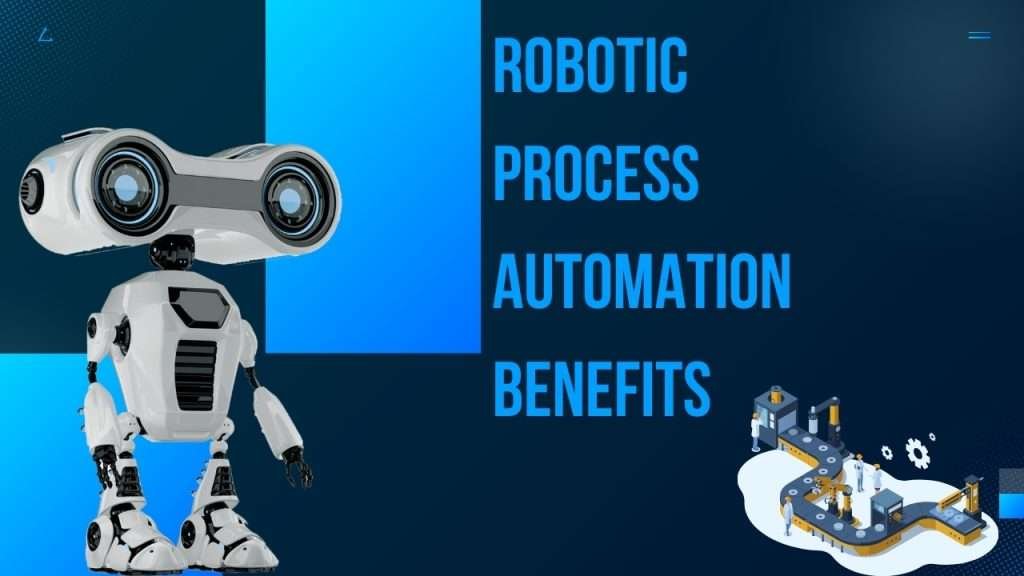This digital era, and robotic process automation are here to ensure any organization has efficiency as the highest priority ever. Imagile that round-the-clock digital assistants will always be twice housed with tedious tasks, so that teachers will set free and assume their own creative and strategic roles. RPA software helps streamlining workflow, increases accuracy, and decreases overall cost, so it is a great addition to digital marketing techniques. Lets get to the depth of the issue which is robotic process automation and, how it is transforming the landscape of marketing, with the wave of innovation and productivity never witnessed before.
What is RPA? Robotic Process Automation Explained
Robotic Process Automation (RPA), as a flag of innovation, completely wins the day and changes the colloquialistic meaning of what business itself means with a new vision and its paradigms in today’s digital reality. The purpose of the RPAs is to imitate the actions of robots or “bots” when they are performing automated tasks that were previously manual by humans. The bots are furnished with this capability, which allows them to operate like humans in a digital realm, carrying out such functions as logging into applications, copying, pasting, filling out forms and more.
The power of RPA is it high-performing speed, unparalleled accuracy, and exceptional productivity, which eventually help to free up human resources devoting their time and attention to more complex and value-based tasks. Unlike traditional automation solutions, which are normally advanced and require either complex coding or integration of several parts, RPA platforms are friendly to the user and do not require the user to be technical, this enables organizations to swiftly and moderately deploy automation initiatives.
RPA is multi-faceted and its application goes beyond just a single industry or function. As such, it becomes a versatile option for businesses looking forward to automate a wide variety of processes. Ranging from finance, healthcare and manufacturing to customer service, RPA is here to improve business functions, and not by a little but a lot.
In essence, RPA empowers organizations to:
- Improve Efficiency: RPA technology performs better in repetitive tasks, it speeds up process execution, shortens the cycle and hence results in great efficiencies within the organization.
- Enhance Accuracy: Bots can perform tasks with high degree of precision and consistency, resulting in error reduction, better data quality, regulations comprehension and automation in the business process.
- Increase Scalability: RPA enables organizations to achieve scalability in their automation initiatives so they can constantly redefine capacity of work to operate seamlessly without needing to change performance at all.
- Drive Cost Savings: Automation of laborious tasks by RPA is one of the ways to decrease the number of workers and make operations less expensive without impacting the organizations return on the investment.
Robotic Process Automation (RPA) takes place through running bots, or software robots in digital systems, to do automated, rule based activities. Here’s a breakdown of how RPA works:Here’s a breakdown of how RPA works:
Task Identification:
The first stage in the RPA implementation involves identifying the tasks which are not adding more value to business. Moreover, these tasks should be rule-based and time taking. Such jobs are often easily automated and are diverse in nature ranging from data gathering and extraction to general reporting development and invoicing processing.
Bot Configuration:
What follows is the process of identifying the tasks and then configuring robots (software or bots) to do them. This comprises of equipping the robots with the aptitude to simulate the moves that a human may do within the information technology systems, e. g. log into applications, move through interface, and interact with data.
Process Automation:
The specified bots have set up and the automation process follows. The bots fetch the requisite software programs, terminals, or information sources and use them to automatically perform the given tasks. They tend to execute the tasks based on the rules and the workflow that got prerequisite definition, and therefore, they work step by step accurately and rapidly.
Data Processing and Integration:
The bots work with the systems of digital. . . s to carry out data processing, information extraction and calculations as the situation demands. They can link different data sources, check information for errors and correct any records in a real time manner, thereby reducing the possibility of data inconsistency and incorrectness.
Error Handling and Exception Management:
While bots aim to achieve high accuracy by performing assigned tasks, they also comprise erred handling tools as well as exception resolution mechanisms. In case such erroneous or non-sensical data formats and system failure, bots can trigger the steps, which were defined in advance, to overcome these obstacles or escalate then to the operatives, who are real people.
Monitoring and Optimization:
Throughout the automation process, organizations keep on tracking bot performance and for the optimization of workflows, they make efforts. This may, thus, entail, the fitting of bot configurations, editing of process rules, or identification of possibilities of more automation for better work processes and output.
Robotic Process Automation Benefits

Robotic Process Automation (RPA) encompasses a range of benefits granted to different organizations within different sectors. Here are some of the key advantages of implementing RPA:Here are some of the key advantages of implementing RPA:
Enhanced Efficiency:
RPA can be used to automate repetitive tasks which are based on rules, enabling the organization to finish tasks faster and with a higher correlation than the traditional manual processes. This, in return, boosts the sales and productivity not just in the manufacturing unit but rather in the whole organization.
Cost Savings:
Through the implementation of technologies which were previously impossible to automate, firms can benefit hugely by major cost savings on wages. RPA minimizes the necessity of human interruption in redundant tasks that therefore provides a space for them to apply their skills and expertise on the other more intellectual tasks.
Improved Accuracy and Compliance:
RPA bots handle tasks with an impressive accuracy and consistency, which in turn, reduces the possibility of losing data or, in the worst case scenario, producing incorrect outcomes. Consequently better data quality and the compliance with institution, authority, or statutory rules are ensured.
Scalability:
RPA’s ability as a complementary technology that can rapidly scale up an organization’s automation efforts to accommodate variations in workload or organizational demands is one of the attractive qualities that it possesses. Either way, as long as there is an increase in the count of transactions or improving of automation in new processes RPA is able to adjust itself to meet the organization’s needs.
Faster Processing Times:
RPA bots don’t need well-deserved vacations or weekends, though they are obliged to work faster to accomplish the tasks within the set deadlines. Through this process, organizations can proceed with their operations more effectively and adequately deal with the customers’ matters in due time.
Enhanced Customer Experience:
Replacing the mundane routines with automated actions and optimizing the low-complexity procedures may be done by RPA with the objective of enhancing the quality of service provided to customers. Quicker response time, accurate and error free processing and more personalized communication results in higher level satisfaction among customers, and lead to loyalty.
Insights and Analytics:
RPA is the process of gathering data from all sorts of sources which provides organizations with in-depth analysis and insights, by which then they can use it for decision-making and development business. This machine-enabled real-time providing a detailed insight into processes creates an opportunity to spot areas of opportunities for improvement and optimization.

RPA can be a bona fide game changer in the realm of business operations while eliminating constant cycle of repeatable tasks and integrating them into the workflow. This practical guide will show you how to apply RPA in your organization in a gradual manner, deliver benefits from the initial planning to the successful deployment.
Step 1: Enumerate Options Which Can Be Automated
Identify first the processes within organization that makes up for a better chance of automation. Search for tasks that might be routine, rule-dependent, and cumbersome, including data input, accounts receivable management and report generation.
Step 2: Evaluate Workability and Values
Perform a feasibility analysis to ascertain if the short-listed processes involved could be automated. Assess such factors as complication degree, volume and revenue terms to achieve. Figure out result of automation in case of costs reducing, productivity growing, and errors decrease.
Step 3: Pick the Best Type of RPA Platform
Pick an RPA platform that suits well for your organization as far as the objectives and goals are concerned. Consider attributes such as being easy to use, scalable, functional support and supplier support. Evaluate of different options and determine the platform that suits your choices.
Step 4: Design and develop automation workflows in order to ensure a stronger and more scalable solution.
Employ the collaboration framework with stakeholders to build automation flows which modernize the manual process worksteps. Define the structure, operational procedures, and the flow points that will orient the conduct of the virtual machines. Figure out the scrupulously retired bots and platform through the pre-determined RPA platform.
Step 5: Even with Test Automation Workflow.
Comprehensively review the automation workflow in a simulated environment to make sure that all requirements are covered and the process is running normally. Find the glitches and the deficiencies, and take good care of them during testing. Drill a seasoned user acceptance testing (UAT) to check the functionality and the usability of the automation solution before making it available for production. It is to validate the intended feature and simplify the complex jobs.
Step 6: Engage Bots in tangible manufacturing.
Conduct testing and validate the prepared process flows and thereafter get the bots deployed to the production environments. Monitor their performance closely during the first few months after deployment so that the system can be improved as necessary to inhibit the occurrence of any problems.
Step 7: Check and Grid Efficiency .
There is a need to consistently monitor the operational behavior of the running bots and measure the important metrics that comprise the throughput, error rate, and resource utilization. Address areas where a waste of resources occur, for example, by finding ways how to speed up or simplify the workflow and implement more targeted settings in a bot.
Step 8: Train and Support the Navigation Team on a Duration Basis
Train and support the human beings who will work with bots every day. Make sure they have the ability to work with the machines, and know how to navigate to the next support level if needed. Promote a world of automation and inventiveness throughout the organization.
Step 9: Grow Automation Veers
While understanding the benefits brought about by RPA and also automation, you can look for means of scaling these efforts over to more processes and departments. Assess and allocate the new automation programs based on their ability to make impact and provide ROI on a constant basis.
Step 10: Evaluate Outcomes and Repeat what works the Often.
Set regular benchmarks of your RPA success, where the success and failure of your RPA initiatives would be considered with respect to specified metrics and objectives. Categorize successes and showcase again opportunities for new achievementsPerpetuate your automation-based design to move on a path of continuous reshaping.
Wrapping Up
Today, the world is full of various digital mediums, Robotic Process Automation (RPA) establishes itself as a digital friend and assists in completion of labourious and complex tasks as well as raise productivity. RPA activities effectively reduces human intervention as well as increase productivity. In turn, this reflects off the chain reaction benefiting human creativity. In the field of digital marketing, RPA tools bring a higher level of competitiveness, in that tasks like data management and content distribution can now be executed with no human effort, leaving marketers with more time to devote to strategic planning and innovative experiments. Moreover, an adoption of RPA solution is not only an optimization but rather a way to let human staff fly beyond the ordinary, dull work.







